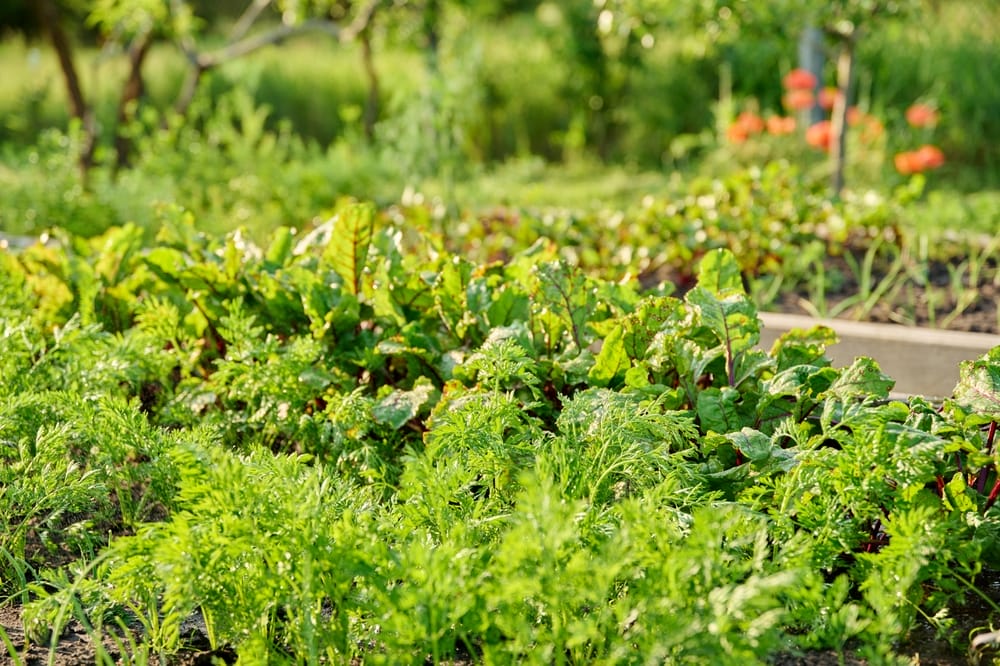
Image Source: Shutterstock.com
Winter is sneaking up fast, and if you’re the type of gardener who always waits until the last possible moment, it might feel like your planting season is over. But hold on! Even as the days get shorter and frost threatens, there are still a surprising number of vegetables you can plant to keep your garden thriving through the chill. These hardy crops aren’t just tough—they actually thrive in cooler temperatures, and some even taste better after a touch of frost.
So grab your gloves, your seeds, and your sense of adventure, because there’s still time to grow something delicious before winter takes over.
Leafy Greens That Laugh At Frost
If there’s one group of vegetables that thrives in the cold, it’s leafy greens. Spinach, kale, and Swiss chard are notorious for being frost-tolerant, sometimes even sweeter after a light freeze. These plants can survive in soil that’s cold to the touch and often grow faster when other vegetables start slowing down. They’re perfect for containers, raised beds, or garden rows, and they give you quick, nutritious harvests even when the temperature dips. Plant them now, and you could be snipping fresh salad greens well into the first snowfalls.
Root Vegetables That Dig In
Carrots, beets, radishes, and turnips love cool soil almost as much as they love being eaten. Late-season plantings might seem risky, but these roots are hearty and can develop even in chillier conditions. A light frost can actually improve the flavor of some root vegetables, making them sweeter and more robust. Make sure to plant them in loose, well-draining soil to help them expand underground without obstacles. With a little patience, you’ll be pulling up vibrant, flavorful roots long after summer’s bounty has faded.
Brassicas That Brave The Cold
Cabbage, broccoli, and Brussels sprouts are like the superheroes of the late-season garden—they don’t just survive the cold, they thrive in it. These vegetables develop better flavor when exposed to cooler temperatures, often becoming sweeter or nuttier as frost approaches. They do require a bit more attention to spacing and support, but the payoff is huge: crisp, fresh heads ready for winter cooking.
Even novice gardeners can manage these crops with a little planning and protective covers for unexpected deep freezes. Add them to your late-season garden, and you’ll feel like a wizard watching your plants grow despite the dropping mercury.
Garlic And Onions That Keep Growing
It’s not too late to start garlic and certain onion varieties, especially if you live in a region with mild winter temperatures. Garlic cloves planted in late fall will establish roots before the ground freezes, then emerge stronger and healthier in the spring. Onions, especially sets and seedlings, can survive cold snaps if planted with a light mulch to protect their tender tips. These crops are low-maintenance yet highly rewarding, providing you with flavor-packed ingredients for months. The key is timing: plant now, protect lightly, and you’ll have a culinary jackpot ready when early spring arrives.
Herbs That Handle A Chill
While most herbs are notoriously finicky in cold weather, some can take a hint of frost without flinching. Parsley, cilantro, and chives are surprisingly hardy and can continue growing well into late fall. These herbs are perfect for containers, which can be moved under cover if the first deep freeze comes early. Their leaves add a fresh, vibrant punch to winter soups, roasted vegetables, and holiday meals. Even if you can’t maintain a tropical herb garden, these cold-tolerant varieties ensure you never run out of fresh flavor.

Image Source: Shutterstock.com
Tips To Extend The Growing Season
Planting before the deep freeze isn’t just about choosing the right vegetables—it’s also about protecting them. Row covers, cold frames, and even old sheets or blankets can make a huge difference, keeping frost at bay while letting sunlight through. Mulching around your plants helps regulate soil temperature, preventing roots from freezing overnight. Watering strategically—before a cold snap—can actually help insulate plants and reduce frost damage. By combining hardy vegetables with a few simple protective measures, your garden can continue producing even when winter is knocking at the door.
Planning For Next Year While Planting Now
Late-season planting is also a great opportunity to think ahead to spring. Cover crops, like clover or rye, can be sown now to enrich your soil for next year’s planting season. Even if you focus on edible crops, note which varieties thrived and which struggled so you can plan better next year. Keep a journal of planting dates, weather patterns, and harvest success to refine your gardening strategy. Gardening is as much about observation and learning as it is about digging and planting. A smart late-season gardener always plants with the future in mind.
Share Your Late-Season Success
There’s still time to fill your garden with flavor, color, and nutrition before the deep freeze sets in. Hardy leafy greens, robust root vegetables, cold-loving brassicas, and frost-tolerant herbs can keep your kitchen stocked and your gardening spirit alive. Even garlic and onions can be tucked into the soil now, promising a spring harvest that feels like a reward for your perseverance.
Have you planted anything late this season, or do you have tips for surviving the first frost? Share your thoughts, successes, or funny planting mishaps in the comments.
You May Also Like…
- 8 Cold-Tolerant Greens to Plant in September
- 9 Root Vegetables That Should Be Stored in Sawdust
- 9 Root Vegetables to Store in Sand This Winter
- 10 Crops That Germinate Stronger in Cold Soil
- 7 Native Shrubs to Plant Before the Ground Freezes
Leave a Reply